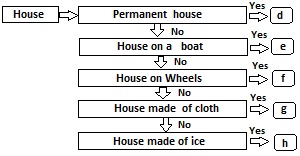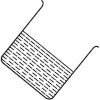Subject :NSO Class : Class 1
Post Your Answer
Subject :NSO Class : Class 5
Study the given flow chart. Which out of d, e, f, g or h best represents caravan and igloo respectively?

| Caravan | Igloo | |
|---|---|---|
| A | e | f |
| B | f | h |
| C | f | e |
| D | g | h |
oh this is easy!!!!!!!!!!!!!!!!!! correct option is b!
Post Your Answer
Subject :NSO Class : Class 5
Post Your Answer
Subject :NSO Class : Class 2
Post Your Answer
Subject :NSO Class : Class 7
Post Your Answer
Subject :NSO Class : Class 4
Post Your Answer
Subject :NSO Class : Class 2
Post Your Answer
Subject :NSO Class : Class 3
Post Your Answer
Subject :NSO Class : Class 6


















